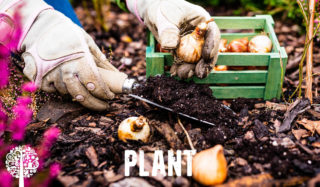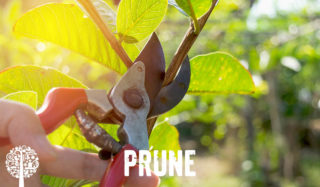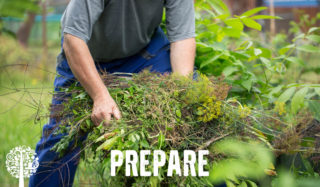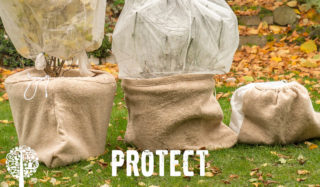The trees are bare of leaves, and the garden is cozy under a layer of mulch and compost. The first snow has fallen in some places, blanketing the garden in white and winter wonder. Peace has descended over the gardenscape, supplying quiet for the resting perennials and other garden stalwarts. For the gardener, the frenzy of putting the garden to bed for winter, raking leaves, and planting spring bulbs have wound down. But even now, a few things keep the gardener busy.
Plant
Early December is not too late to plant. As long as you can work the ground, you can plant bare-root plants like roses along with those last few must-have spring bulbs. Make sure to cover them with compost and leaves to keep them warm.

Prune
December is perfect for giving the now-dormant maple, dogwood, apple, and pear trees a prune. Create an open bowl shape to allow airflow up the tree’s middle and around the framework of the main branches. You can use the cut branches for holiday décor inside or on the porch. Mixed with a few evergreen limbs, they make an attractive arrangement.
Prepare
If you haven’t already, ensure that free-standing trellises, pots, fences, and patio furniture are either stored for the winter or secured. In severe weather, they can get blown around and cause property damage. You should also tie climbing roses and berry canes and mulch around shrubs and young trees.
December’s also a great time to clean and store garden tools for spring and tidy up the greenhouse or garden shed. Why waste time searching for clippers in the spring when there are so many other exciting things to do in the garden?
Protect
It’s time to protect plants in permanent outdoor containers. Group them against the side of the house and have burlap shrub covers handy so that you can save the foliage from frostbite when temperatures dip.
It’s tempting to cut back the dead foliage and seed heads of perennials such as sunflowers, echinacea, and clematis, but hold back. They not only provide some winter interest but, as they decompose, will help protect and add nutrients to the soil throughout the winter. They’re also a good food source for birds that don’t migrate south and a protective shelter for overwintering insects.
Plan
Take stock of what worked and didn’t in the previous growing season. I wander the garden this time of year, making notes and visualizing what can go where next year and what needs to be transplanted in spring. Of course, I also dream about all the new plants for next year.
Many seed companies are ramping up in December for next year’s growing season. It’s an excellent time to start thinking about your selections. That special packet of seeds or gift card to your favorite garden center may find its way into your stocking – courtesy of Santa himself!

There may not be much to do in December, but it’s not time to forget about the garden. Even now, on the darkest days, if you look very closely, you can see tiny buds beginning to form on the clematis, panicle hydrangea, and bare tree limbs.
Around the world, whether winter or summer, there’s always activity and amazement in the garden! In the southern hemisphere, December is equivalent to June in the north. The last annual plantings are being done; container plants that can’t tolerate the heat are being moved to shadier spots, and compost is being added to the veggie patch.
Stay tuned for next month’s tips as we garden together!


